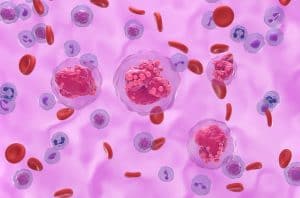
Insider Interview: ABPI’s Paul Catchpole discusses NICE’s new fast-track appraisal system
pharmafile | March 30, 2017 | Feature | Business Services, Manufacturing and Production, Medical Communications, Research and Development, Sales and Marketing | ABPI, Insider Interview, NICE, Paul Catchpole, fast track
Paul Catchpole, Value and Access Director at the Association of the British Pharmaceutical Industry (ABPI), gives his thoughts on the potential efficacy of NICE’s new fast-track drug approval process.
What were your initial impressions when NICE unveiled its fast-track process?
When something is labelled as ‘fast-track’ it can sound attractive, and indeed in this case it is. Industry has been calling for greater flexibility in NICE appraisal processes for many years, and so this is a welcome development that will benefit a small number of medicines.
It makes sense for those medicines that clearly represent good value for money to be expedited through the system, and this needs to extend beyond just the NICE appraisal process into delivering faster access for NHS patients too.
Whilst this is a welcome development, industry has been calling for all medicines which are considered to be breakthroughs or truly transformative to be fast tracked so that patients can benefit sooner. The Accelerated Access Review clearly endorses this ambition and we need to see this taken forward with a clear process for identifying things that are important with a mechanism to fast-track them through the system.
The consultation identifies medicines that are very good value for money as having a cost per Quality Adjusted Life Year (QALY) of less than £10,000 and a low budget impact of below £20 million per year.
This does seem overly restrictive because whilst a medicine in primary care might be very good value for money it might also be appropriate for use in many thousands of NHS patients putting expenditure over £20 million. So that wouldn’t qualify for fast-track but it might well be something that is a very important treatment for patients.
So do you regard it as a step forward?
It’s one step forward. NICE has looked at the proportion of treatments that might benefit from a fast-track approach; I think they’re estimating 15% or 20%. Is that helpful? Of course it’s helpful, so we welcome that. It’s a step on the journey, but the broader ambition nevertheless remains to fast-track other things that matter too.
Were these concerns that you raised during the consultation process? Do you feel that they were adequately considered?
Yes, these points have all been made to NICE and to NHS England. This is the basis of what we said in our response to the consultation. This, along with the feedback from many other organisations, is currently being considered by NICE and NHS England, so what the final proposals will be remains to be seen.
However, besides fast track there are two other very significant parts to the consultation that are perhaps more important. The proposals here are problematic and are going to present some very real challenges if taken forward unchanged.
As it stands, do you think manufacturers could be dissuaded from prioritising delivery of treatments for rare diseases to the UK?
The proposal to introduce cost-effectiveness analysis for ultra-orphan medicines going through the Highly Specialised Technology (HST) Programme is something that the industry does not support. Why does it not support it? Because, as NICE itself has recognised in the past, the challenge with ultra-orphan medicines is that they are only used in very, very few patients, and therefore the evidence base for both the natural history of the disease and the treatment itself is understandably highly limited. So the idea that you can reliably come up with a precise cost-effectiveness estimate for these medicines when there’s so much uncertainty in the evidence…well, I don’t think it’s generally possible, because you have to make just too many assumptions which are very difficult to validate. That’s why the current approach for assessing these medicines doesn’t use cost-effectiveness analysis, but tries to use alternative mechanisms.
Even if you did assume that cost-effectiveness analysis was reasonable to estimate for these medicines, then the proposed threshold of £100,000 is just not enough for these medicines to get through, because the kind of cost-per-QALYs that are usually quoted are more like £400,000 or £500,000. None of the medicines that have been through the HST programme to date would have got through at a threshold of £100,000, so it’s difficult to see how this proposal is positive and will benefit patients with very rare conditions.*
What kind of alternative measures could have been employed to keep costs under control?
The current approach is to try and use different benchmarks and comparators; looking at comparable prices in other countries; looking at prices for similar medicines in similar disease areas – an approach to get some benchmark around costings, but without using full cost-effectiveness analysis. ABPI has proposed that instead of introducing cost-effectiveness analysis, NICE think about introducing a structured decision making framework which would allow broader decision-making criteria to be made very explicit, paving the way for discussions around commercial managed access and data collection agreements.
A lot of the medicines that have been through the HST programme so far have very good data collection systems in place around their use. If companies are willing to invest in supporting that data collection, if they’re willing to come to an agreement about the quality and the level of evidence that’s available and how it can be supplemented, it makes sense to negotiate an access agreement using those parameters, and to have a negotiation about what makes sense under those terms. This would be far preferable to introducing cost-effectiveness analysis.
So one of the key issues is the lack of flexibility of the system?
Exactly. Nobody else in other countries evaluates these kinds of medicines using this very rigid approach, so we’d be going in the opposite direction of travel. Most countries recognise that you need flexibility to take fully into account the individual circumstances of each medicine. Bearing in mind that any one HST medicine is often intended to benefit tens of patients, not even hundreds, it makes sense to keep approaches flexible and pragmatic, as opposed to mechanistic.
How does that impact the way the industry has to approach bringing drugs to market in the UK?
The evidence for medicines for rare diseases emerges like any other medicine, through clinical trials and then through patients being able to access a treatment through registries and so on. If there’s a break in that chain, it may not make sense commercially for a company to come and invest in the UK in clinical trials if there is no continuity of access. Particularly because, for these medicines, the process of evidence generation is a journey; it’s a continuum that goes from patients in clinical trials through to patients treated in the clinic, who have been involved in ongoing data collection programmes and registries – that’s how the data is built up for medicines for rare diseases. The risk is that companies with medicines for rare diseases won’t invest here and patients won’t get access to the latest clinical trials.
With Brexit looming, would you say that appearing attractive to businesses is going to be crucial for the UK?
It’s absolutely crucial. Having an end to end pathway with a clear route through into routine access for NHS patients is more important than ever; you need a single pathway that gets all the way into the clinic. If we don’t create this, we may end up paying a high price in terms of lower inward investment, sector job losses and poorer UK patient outcomes.
NICE are stuck between a rock and a hard place with having to try and remain cost-effective while still offering treatments to patients – do you agree that it must be a difficult balancing act for them?
It’s a very difficult balancing act and the industry recognises that. We need good robust systems to evaluate the effectiveness of our medicines, so the value assessment piece is very important, and the industry supports that, but the mechanisms that are used have to be proportionate, appropriate and fit for purpose for the medicines that are being brought to the UK by the global pharmaceutical industry.
* Since Pharmafocus spoke to Paul Catchpole, NICE has updated its guidance to allow funding of medicine up to £300,000 dependent on being able to deliver more than 30 QALYS in a patient’s lifetime.
Is NICE’s new fast-track approval process fit for purpose? Let us know your thoughts @pharmafocus!
Related Content

NICE recommends migraine treatment for NHS use
The National Institute for Health and Care Excellence (NICE) has shared draft guidance recommending AbbVie’s …

GSK’s Jemperli recommended by NICE for endometrial cancer treatment
GSK has announced that the National Institute for Health and Care Excellence (NICE) has recommended …

NICE recommends SC treatment of AbbVie’s Tepkinly for patients with DLBCL
AbbVie has announced that the National Institute for Health and Care Excellence (NICE) has recommended …








